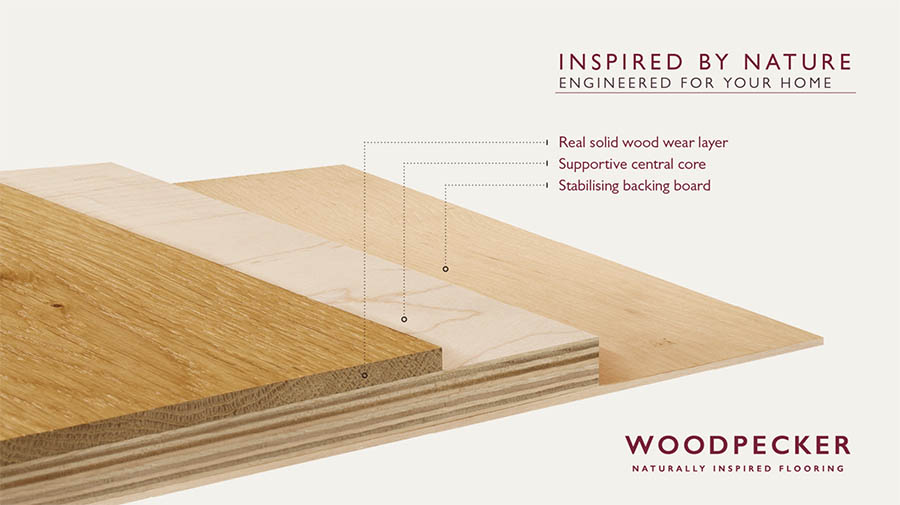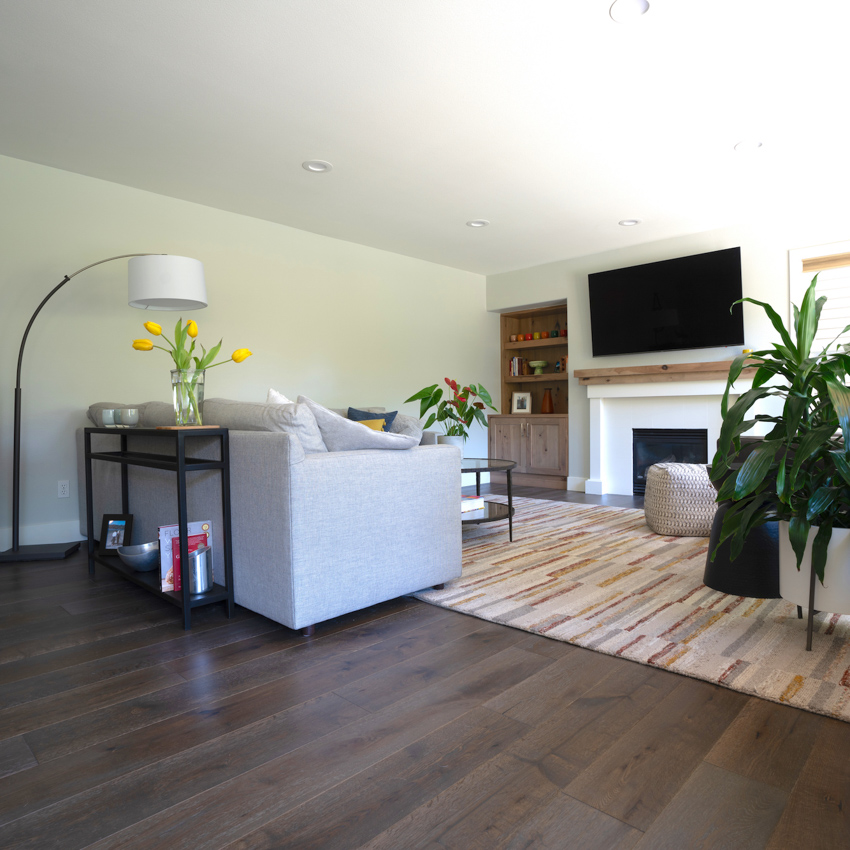HOW ENGINEERED FLOORING IS MADE

Harlech Collection
Today, more than half of all wood floors installed have an engineered construction. Engineered flooring has all of the natural beauty of solid wood but it’s manufactured in a way that makes it more versatile and more practical within a modern space. Engineered flooring takes up two thirds of our flooring range because of its high versatility and practicality as well as its aesthetic appeal.

Facts about engineered flooring:
- Engineered flooring is suitable for underfloor heating.
- Engineered flooring is suitable for floating over any suitable subfloor.
- Engineered flooring is available in wider planks and longer lengths which allows for a range of different finished looks.
With central or underfloor heating, solid wood floors can easily dry out and become warped as they are more susceptible to expansion and contraction under changes of humidity and varying temperatures. Engineered flooring is designed to overcome such problems and as a result is the preferred choice within the majority of contemporary spaces.
Engineered flooring has a balanced construction, made up of multiple layers of wood pressed together. Each layer is referred to as lamina, and each lamina is bonded to its adjoining layers using an adhesive. On average, the number of lamina ranges from three to twelve, but it varies between all floor ranges.
There are three main sections to an engineered floor:
- The top layer
- The central core
- The backing layer

The solid top layer displays the colour and pattern you’ll see and feel, this is called the wear layer. And again, this differs depending on the manufacturer and their range of flooring. Woodpecker’s range of engineered flooring consists of a wide range of wood types, finishes and thicknesses. Our Salcombe range for example has a 3mm wear layer, whereas our luxurious range, Chepstow, has a wear layer of 6mm. A natural floor with a thicker wear layer allows for sanding and re-finishing if required at a later date, therefore they’re seen as longer-lasting and of higher quality. However, most engineered wood floors can be recoated regardless of their wear layer thickness and if well maintained and properly cared for, all engineered floors can last a considerable amount of time, making them a worthwhile investment.
The middle layer of engineered flooring is called the central core. Within the central core, each lamina is built up in a cross-directional fashion; each layer is laid at a 90-degree angle to the layer that is above or below it to ensure maximum dimensional stability. The core within a Woodpecker engineered floor is made up of a composite of softwood, high density fiberboard or plywood. This helps create the stability that an engineered floor is renowned for. And below that there’s a backing layer for increased strength and durability. This unique structure gives engineered wood great adaptability and results in a more stable floor, particularly within environments which are susceptible to changing levels of moisture.

The wear layer for engineered floors can be constructed in three ways:
- Sawn
- Sliced
- Rotary peeled
Sawn engineered wood floors are produced from logs which are sawn straight through the log into the material used for the wear layer. The sawn process results in a similar result to that of solid wood – the only difference being the thickness of the cut. The benefit of sawn engineered flooring is the final look, it is characteristically identical to that of solid wood.
Sliced engineered wood floors are created from one log which has been cut into segments, with each segment called a ‘cant’. The cant is sliced on an angle to form the wear layer. Once again, the characteristics of the finished result is similar to that of solid wood flooring however there is a thickness limit to the slicing process and it can stress the wood fibre.
Rotary peeled engineered floors involve the logs being placed onto a large lathe which is spun against a sharp blade. the log is peeled which results in one large sheet of wood wear layer. The grain pattern and natural characteristics of the wood is more pronounced with this process and there is less waste. However only thin wear layers can be produced this way.
Woodpecker floors are mostly produced with a sawn wear layer for the best combination of durability, lifespan, and genuine appearance.

